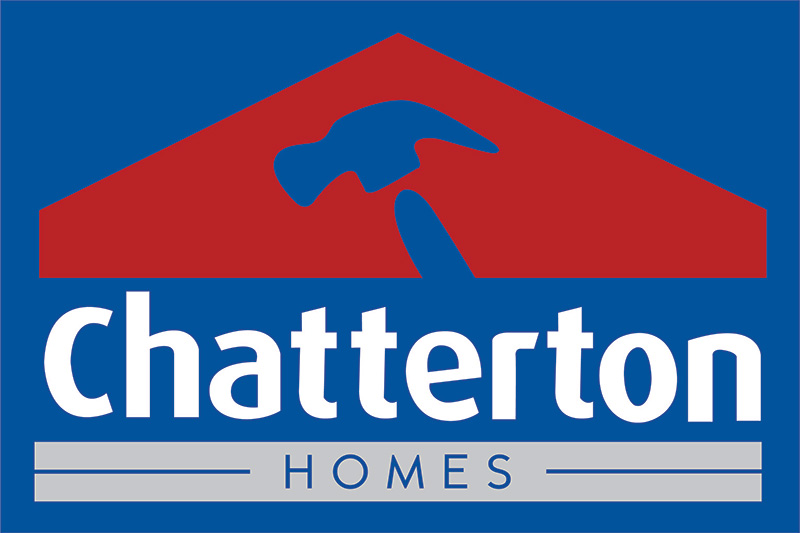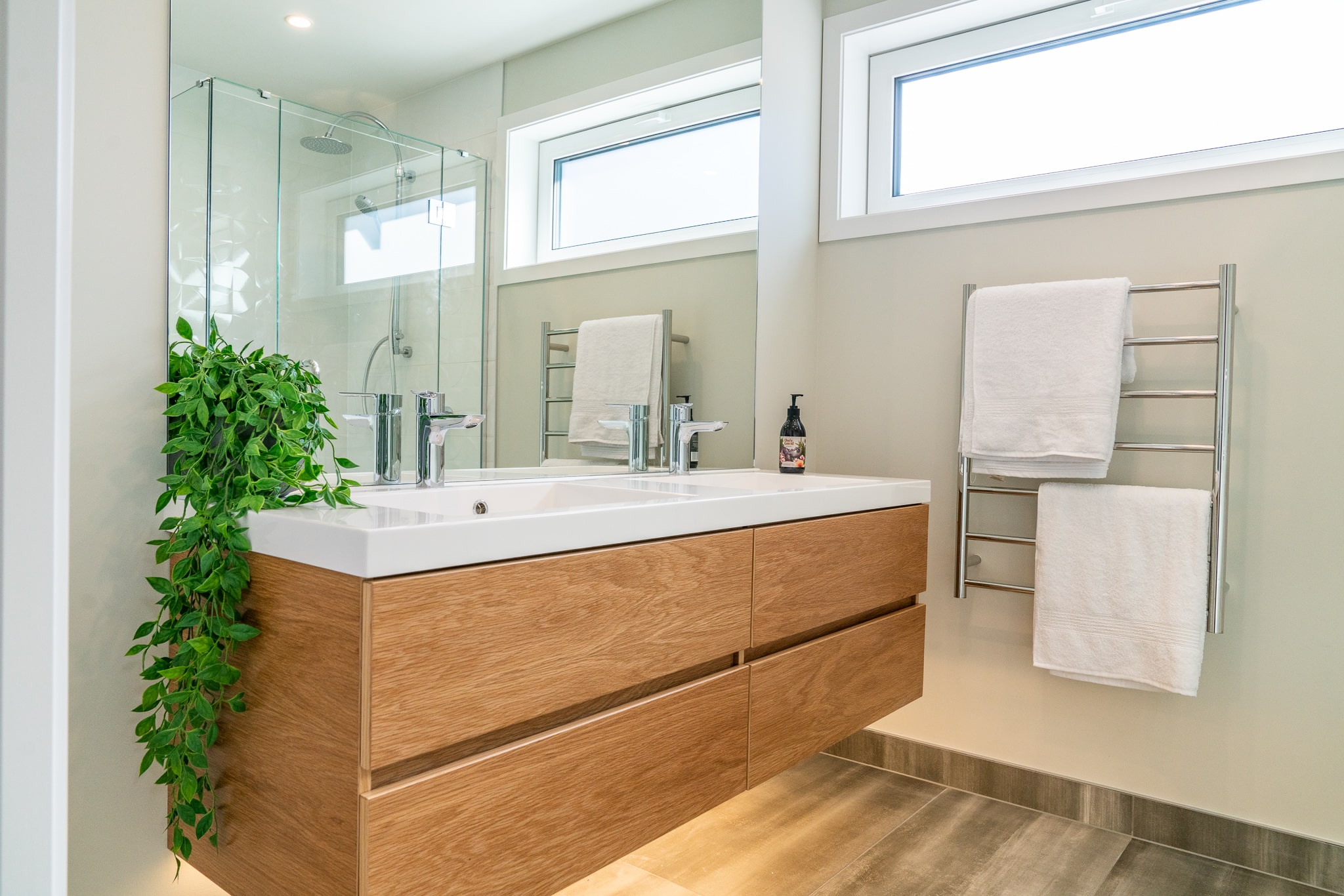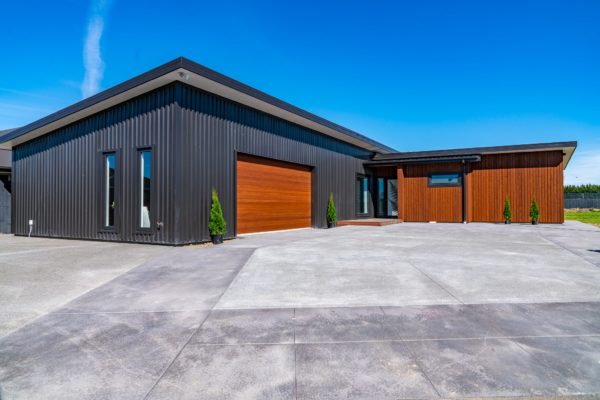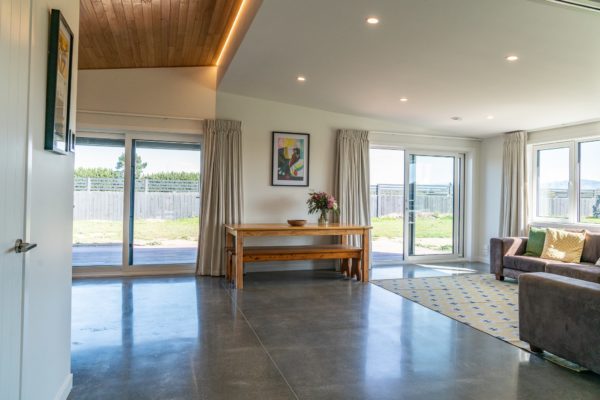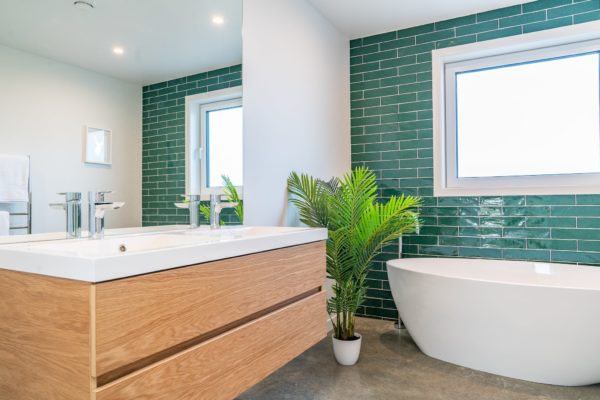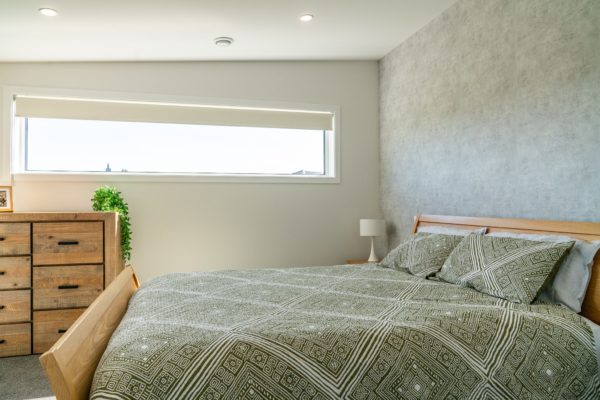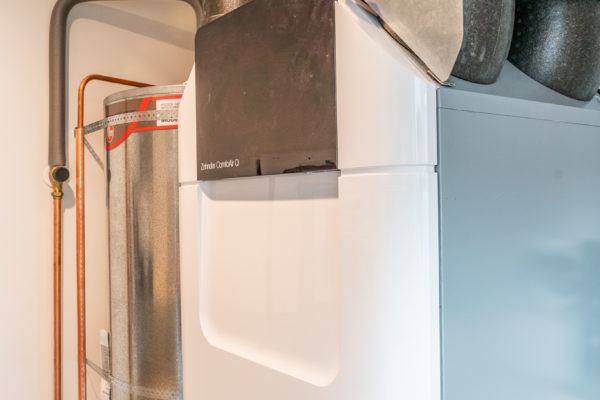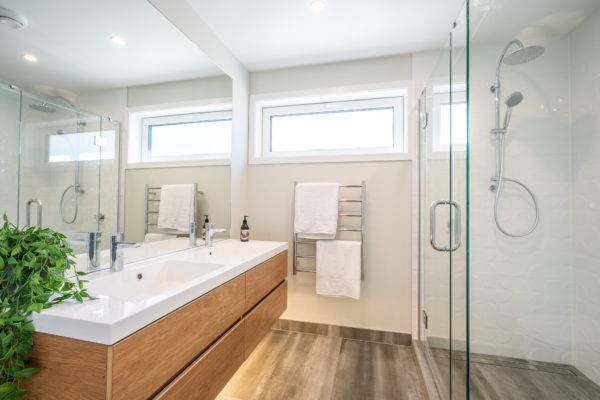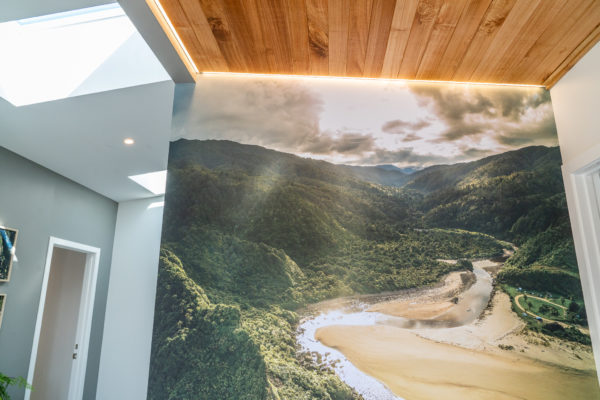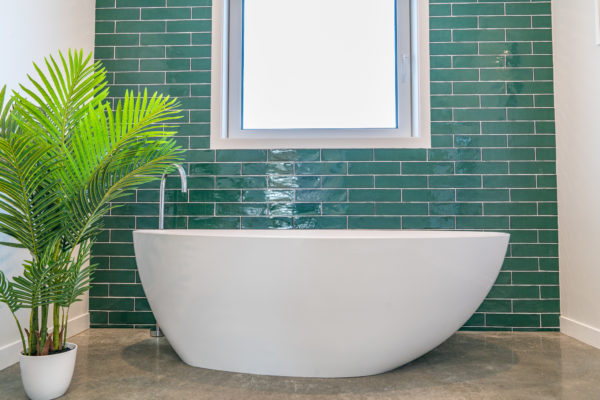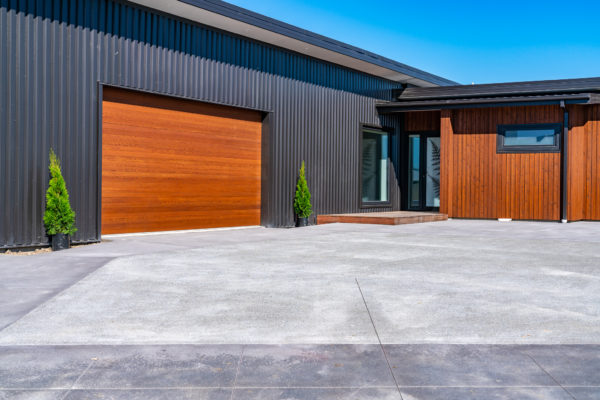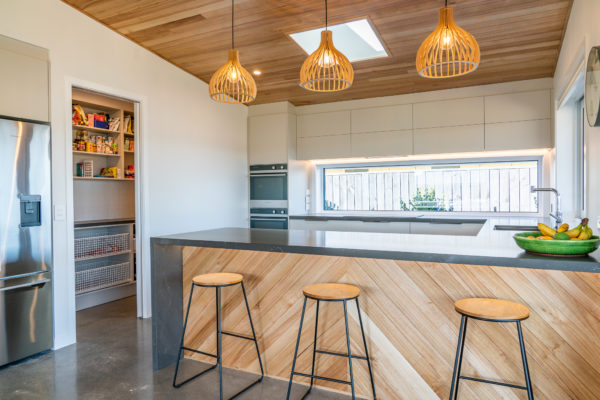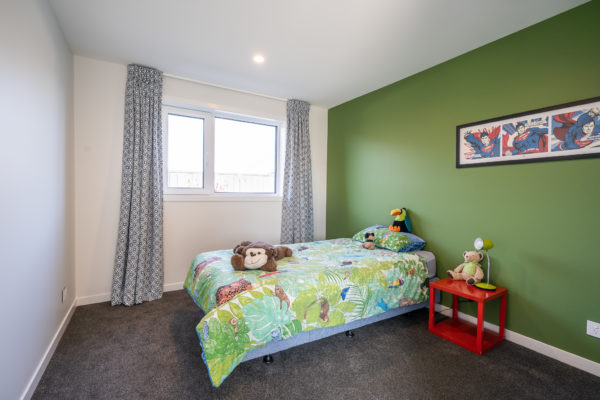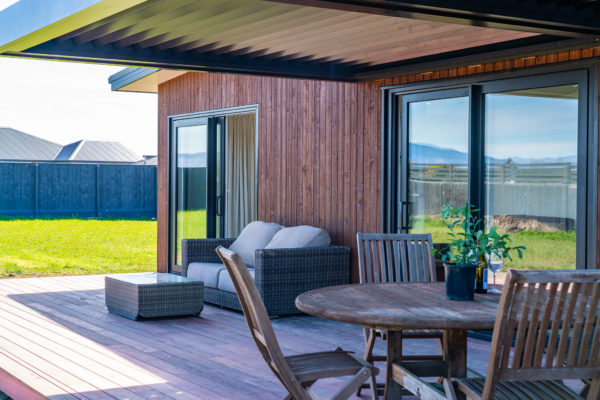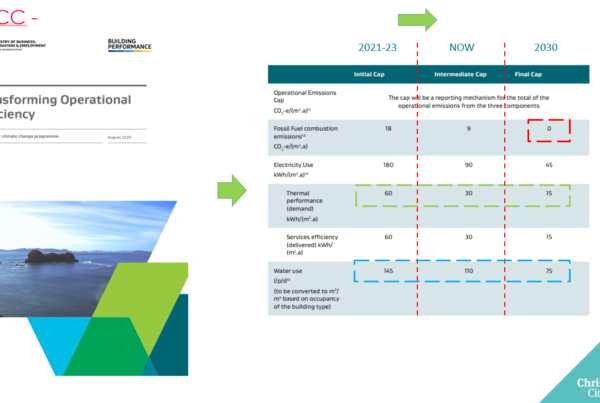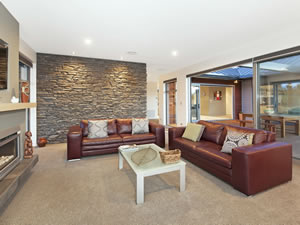After years of dreaming about living in a passive house, we finally moved into our own in March 2020.
So, six months on, what are our thoughts?….
Comfortable Temperatures Every Day
The biggest plus for me was waking up mid-winter and being able to walk around the entire home in a t-shirt. There is no rushing from the cold toilet or need for big fluffy layers. The entire home is at a comfortable temperature.
The only heating that we installed for the whole house was a 4KW heat pump in the living area that is set to come on when the inside temperature dropped below 22 degrees. This services the entire home to keep it at a comfortable temperature. The mechanical heat recovery ventilation system (MHRV) provides most of the heating through recirculating the heat from the stale air, which is continuously being expelled, to the fresh air continuously entering the home (the two air masses themselves do not mix). Peaks and troughs are managed with the heat pump, so it only turns on when needed.
For those of you worried about bedrooms being too hot if they are a similar temperature to the living areas, the trick is the low humidity. A lower humidity means that temperatures are comfortable, the drier air means you do not feel sticky or stuffy. However, investing in lighter weight duvets was needed as our old ones catered for our previous colder and more draughty bedrooms (of a minimum code-built home).
No fluffy slippers in this house!
Cold feet are not an issue either, even with a polished concrete floor. We have had so many visitors remark on the temperature of the concrete floor, as they had expected it to feel so much colder.
On the subject of ‘surface temperatures’, the windows are also not cold to touch. This along with the airtightness and low humidity in a passive house has meant no condensation at all on the inside of the windows. No wiping windows for us, or chance of mould formation. Interestingly, on the really cold days, condensation appears on the outside of the triple glazing clearly demonstrating how well the construction system works.
We have yet to go through a summer in the house, but we do expect that the external blinds we have yet to add to two west windows will be required to prevent overheating later in the day. It has not been an issue yet but will need to be managed as summer sets in.
We also do not have to pull the curtains on our windows to limit drafts or cold patches. The only reason we pull the curtains now is privacy or to assist the kids going to sleep. One high window in our bedroom is always blind free and enables us to watch the stars in the middle of winter knowing there is negligible heat loss or gain.
Breathing more easily
Another major plus we have found is the indoor air quality. I have become a bit lax at taking my asthma preventer as I have found I have not needed it. The kids are also not waking up with puffy eyes and snotty noses from hay fever (this starts when they go outside!).
When the house is shut up the air tightness means air movement is managed. The fresh air entering travels through the MHRV where it is not only heated with the heat from the stale air being expelled but also goes through the high-grade filters of the Zehnder removing most allergens. The humidity and indoor temperature are controlled so there is no condensation or mould formation.
Interestingly it took a few weeks to adjust to the lower indoor humidity. I became quite thirsty, but this soon settled down once I adjusted to the new normal.
The house is not stuffy as all the air in the house is completely replaced through the MHRV every few hours on average, so smells do not linger even when windows are kept closed. Our recirculating fan in the kitchen is only there to manage fat if you fry a lot. The MHRV manages the extraction of the water vapour and the smells, and extraction vents are strategically placed in the kitchen and bathrooms.
We do open the windows on sunny days for all those indoor/outdoor experiences us kiwis savour, like feeling the breeze, the indoor outdoor flow to the decks, hearing the kids playing outside or just to experience the outdoors. Passive house is not about changing our behaviours and limiting the quintessential kiwi love of outdoor access, it’s about having the comfort knowing that the house will work at its optimum, managing the comfort and quality of our indoor environment, when the house is shut up (and airtight again).
It is very, very, quiet!
Another comment we receive is the lack of outdoor noise in the house. Large trucks travel past our house but due to the airtightness and the SIPs panels we hardly hear a thing. In fact, if you like the sound of rain on your roof you might need to consider skylights LOL! We often go out at night not realising it is raining or the wind has come up!
In fact, some visitors to the house have gone as far to say it feels ‘really calming’. Perhaps it is the quietness, or the interior fresh air – I will try to remember to ask next time, but that is a great compliment.
Another unplanned advantage is that clothes dry quickly as the air is not humid and the temperature good. On a rainy day it only takes half a day to dry a rackful of clothes anywhere in the house. This additional moisture is not an issue due to the MHRV constantly working away in the background.
So, lots of positives, have we found any disadvantages?
Not really. I guess the inward opening doors take up a bit of space inside, so they are harder to leave open as a door. However, the tilt and turn function is incredibly handy if you want a window open and you do not need a separate opening window in that room as the door does both.
We have two sliders for better indoor/outdoor flow that provide less airtightness than a tilt and turn door. However, since we have built, and as is typical with improvements in design, there are now even better airtight options available.
The skylights are not ideal in a passive house, we knew this, and it is an area of compromise that has only been obvious on really cold days. If certification was our aim we would not have gone for them as the house performance would have better met the performance criteria, but testing showed it would still be high performing and after living there we can honestly say it is amazing. In any design, compromises for living or for budget are always present, and it is about balancing those with your build priorities.
To be honest my real niggles are more related to wanting a bigger kitchen sink and a better wardrobe layout! Pretty minor. We got the house construction right for our family. Comfortable and healthy, bright and open, and no wasted spaces.
Cost to Run
Power costs are significantly less as the heat pump only activates on very cold or hot days to even out the peaks and troughs.
We have recently installed equipment to measure total power usage as well as solar PV. Our major power user is the spa, followed by hot water and the induction hob, but we still manage to return power to the grid on sunny days. Being self-organised to use most appliances in daylight hours has managed this further and is very achievable for a larger proportion of the year.
If you are planning on building and want to experience a passive house for yourself, please contact us to arrange a time for us to take you through. You can also check out the building options available.
